Edgar Allan Poe died in Baltimore in October 1849, by most accounts in a state of dissipation and despair. The Raven, which is directed by James McTeigue (“V for Vendetta”; “Ninja Assassin”) and hits theaters today, differs from most accounts by imagining Poe in his final days as a heroic crime fighter, tracking down a diabolical serial killer with the tenacious ingenuity of the special agents on “Criminal Minds.”
Since Poe is widely credited with inventing the detective genre, it seems only fair that he should have a chance to do a little sleuthing of his own. That seems to be the intention of a sadistic murderer whose grisly and ingenious methods are drawn directly from some of Poe’s tales. This homage is horrifying to Poe (who is played by a wild-eyed, wild-maned and furiously energetic John Cusack) but also perversely flattering. Someone has read the work of this notoriously vain, ambitious and competitive writer closely and has been inspired to imitation.
That “someone” can equally refer to McTeigue and the screenwriters, Ben Livingston and Hannah Shakespeare. The fannish obsessiveness that animates The Raven is its most appealing attribute, and even Poe scholars can forgive it for discarding the biographical record in favor of playful, gruesome fantasy. There is a geeky pleasure in matching the on-screen murders to the tales they replicate, as in a Gothic version of Jeopardy! “What is ‘The Cask of Amontillado’?” “Who is ‘Marie Roget’?” “What is ‘The Masque of the Red Death’?”
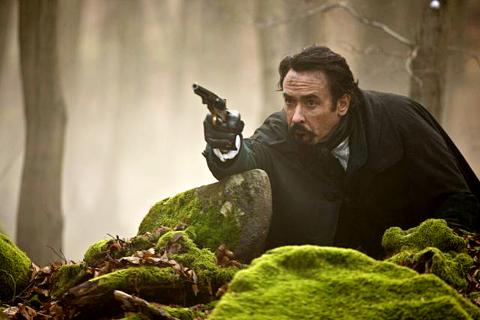
Photo courtesy of Intrepid Pictures
And The Raven might have worked best as the pilot for a creepy, old-style television series, featuring the writer embroiled in a different one of his own narratives each week. In addition to Poe himself, Mr. McTeigue also pays tribute to Roger Corman’s Poe adaptations from the early ’60s, the best of which stand as perverse masterpieces of low-budget, over-the-top Grand Guignol. There is abundant blood, feverish overacting and an atmosphere of hysterical Victorian Americana. Baltimore is envisioned as a city of mist and wet stone, dark wood, rotted gentility and ambient corruption, a place that seems to know that, in 150 years or so, it will be the setting for The Wire. (The Jimmy McNulty of 1849 is a dogged, handsome cop played by Luke Evans.)
The film’s heart is in the right place (which is to say beating insistently under the floorboards). Its literary bona fides are certainly in order, and the filmmakers’ affection for the boozy, wanton world of mid-19th-century print culture — for the inky swamp of sensationalistic newspapers and scurrilous magazines from which American literature sprouted — is very much in evidence. But if Poe was the drunken, tragic bad boy of American letters, he was also a meticulous and disciplined craftsman. And it is on this score, rather than in matters of biographical detail, that “The Raven” lets him down.
“There is a radical error, I think, in the usual mode of constructing a story,” Poe writes in The Philosophy of Composition, a great, mad essay from which young scribblers may still profit. Most writers plod through the “striking events” of the narrative and fill in the gaps with dialogue, description and commentary. “I prefer commencing with the consideration of an effect,” Poe says, emphasizing the singular. “Of the innumerable effects, or impressions, of which the heart, the intellect, or (more generally) the soul is susceptible, what one shall I, on the present occasion, select?”
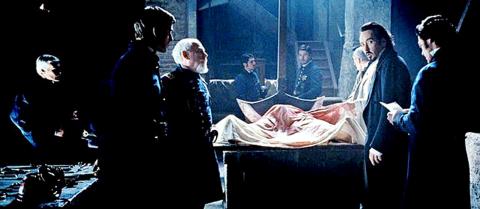
Photo courtesy of Intrepid Pictures
The Raven, unfortunately, does not settle on just one, preferring the usual moviemaking practice of multiplying effects until they pile up into a welter of breathless incident and preposterous exposition. Poe’s motive in seeking the killer is not just wounded literary pride, but also love, for his sensible fiance, Emily (Alice Eve). (Her grouchy, wealthy father is played by Brendan Gleeson.) The couple’s devotion does not quite square with Poe’s louche, alcoholic temperament, and Mr. Cusack works himself into a lather trying to reconcile the contradictory parts of an incoherent character.
In, I am sorry to say, an incoherent movie. Poe wrote love poetry, literary criticism, humorous sketches and science fiction as well as “tales of mystery and horror.” “The Raven” tries to blend all of these motley genres together, and though the effort is valiant, the result is a mess. I suspect Poe’s review of it would have been much more savage than mine.
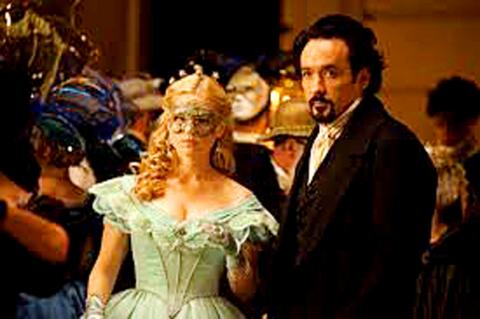
Photo courtesy of Intrepid Pictures
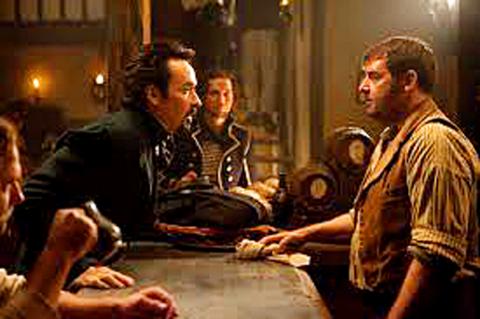
Photo courtesy of Intrepid Pictures
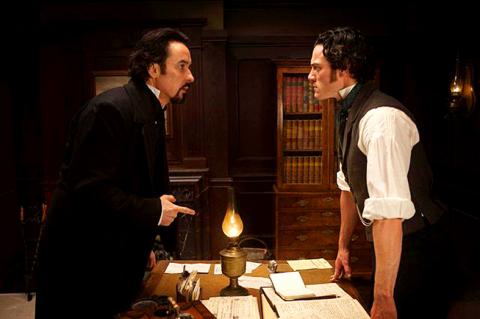
Photo courtesy of Intrepid Pictures

May 26 to June 1 When the Qing Dynasty first took control over many parts of Taiwan in 1684, it roughly continued the Kingdom of Tungning’s administrative borders (see below), setting up one prefecture and three counties. The actual area of control covered today’s Chiayi, Tainan and Kaohsiung. The administrative center was in Taiwan Prefecture, in today’s Tainan. But as Han settlement expanded and due to rebellions and other international incidents, the administrative units became more complex. By the time Taiwan became a province of the Qing in 1887, there were three prefectures, eleven counties, three subprefectures and one directly-administered prefecture, with

It’s an enormous dome of colorful glass, something between the Sistine Chapel and a Marc Chagall fresco. And yet, it’s just a subway station. Formosa Boulevard is the heart of Kaohsiung’s mass transit system. In metro terms, it’s modest: the only transfer station in a network with just two lines. But it’s a landmark nonetheless: a civic space that serves as much more than a point of transit. On a hot Sunday, the corridors and vast halls are filled with a market selling everything from second-hand clothes to toys and house decorations. It’s just one of the many events the station hosts,

Two moves show Taichung Mayor Lu Shiow-yen (盧秀燕) is gunning for Chinese Nationalist Party (KMT) party chair and the 2028 presidential election. Technically, these are not yet “officially” official, but by the rules of Taiwan politics, she is now on the dance floor. Earlier this month Lu confirmed in an interview in Japan’s Nikkei that she was considering running for KMT chair. This is not new news, but according to reports from her camp she previously was still considering the case for and against running. By choosing a respected, international news outlet, she declared it to the world. While the outside world

Through art and storytelling, La Benida Hui empowers children to become environmental heroes, using everything from SpongeBob to microorganisms to reimagine their relationship with nature. “I tell the students that they have superpowers. It needs to be emphasized that their choices can make a difference,” says Hui, an environmental artist and education specialist. For her second year as Badou Elementary’s artist in residence, Hui leads creative lessons on environmental protection, where students reflect on their relationship with nature and transform beach waste into artworks. Standing in lush green hills overlooking the ocean with land extending into the intertidal zone, the school in Keelung